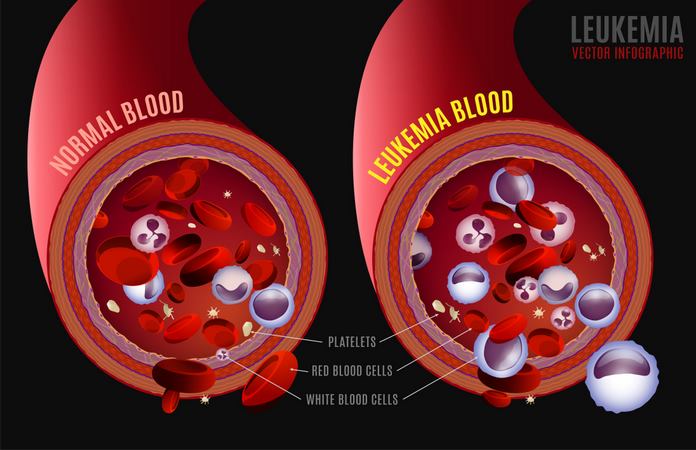The cancer of the bone marrow or blood is known as leukemia. Blood cells (including RBCs, WBCs, and platelets) are produced in the bone marrow. Blood cancer develops when there is a problem with the production of cells in the bone marrow. Generally, WBCs and leukocytes are affected. People above 55 years of age are most likely to develop leukemia, but it can also affect those who are under 15 years.

Leukemia is of two types – acute and chronic. The one that develops and gets worse rapidly is acute, whereas later develops and worsens over time. There are various types of leukemia, and the best treatment method and a person’s likelihoods of survival depend on the type.
Types of leukemia

As we discussed earlier, leukemia can be acute, which means of sudden onset, or it can be slowly developed (chronic). In the first type – cancer cells reproduce themselves rapidly while in chronic leukemia; this develops gradually and shows mild initial signs and symptoms.
This can also be categorized based on the type of cells. Leukemia is known as myelogenous leukemia when it is related to the myeloid cells. Myeloid cells are the young blood cells that develop into monocytes and granulocytes. Similarly, when it involves the lymphocytes, the leukemia is called lymphocytic leukemia.
The four important types of Leukemia are described below:
Acute myelogenous leukemia (AML)
This is the most prevalent type of leukemia and involves myelocytes – a subtype of white blood cells. This type of leukemia can happen both in children and adults. In the USA, approximately 21,000 cases of acute myelogenous leukemia are diagnosed every year, as reported by the National Cancer Institute (NCI) investigations and results of different programs.The five-year survival rate of people with acute myelogenous leukemia is 26.9%.

